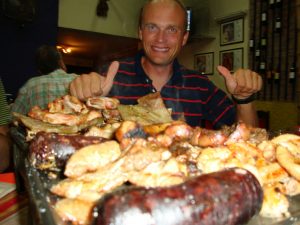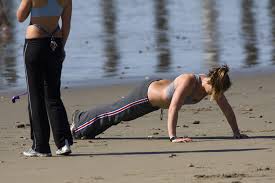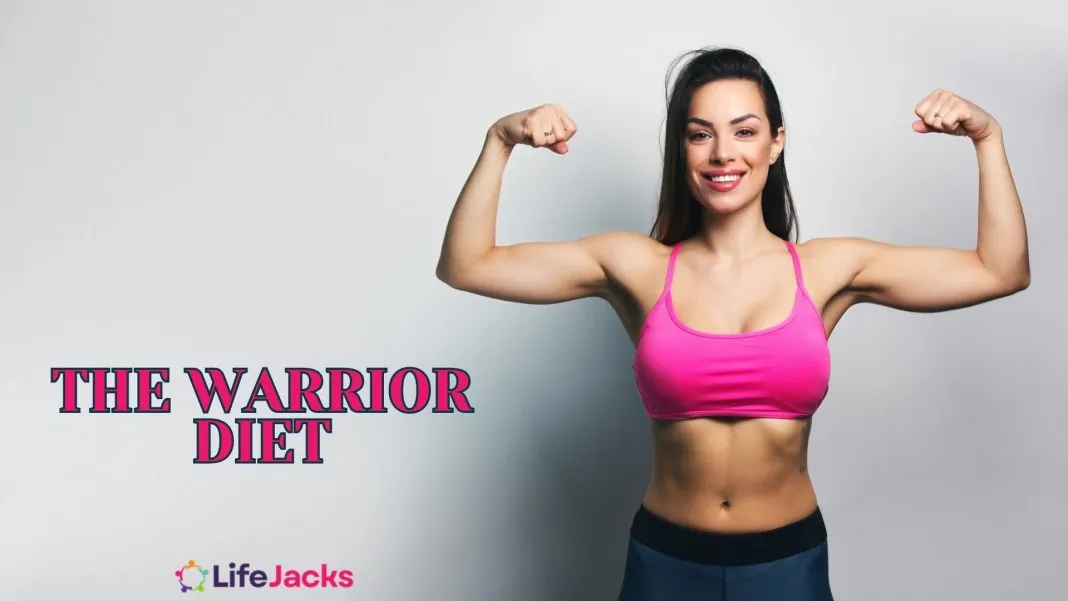I’m not a huge fan of diets – Very few of them yield long-term results anyway – but every once in a while, a diet will come around that makes sense. The Warrior Diet is one of those diets that not only makes sense to me but comes along with some pretty sound advice. I’m not even completely sure you’d refer to it as a diet per se – More of a complete eating, fitness, and lifestyle plan.
These are the kinds of diets that are successful in the long term. People should follow these diets if they want a concrete outline for losing weight and living a long and healthy life.
What Is the Warrior Diet?
The Warrior Diet was created by Ori Hofmekler – A former member of the Israeli Defence Force and contributing health editor of Penthouse magazine. The eating part of the program is based on Hofmekler’s own experiences in combination with the theory that the eating cycle presented in the plan mimics that of the ancient Roman and Spartan Warriors.
This diet is effective because it doesn’t dictate what you need to be eating – You don’t have to count calories or weigh out your food (because who has time for all of that, really?), and you won’t need to add up any points for any system – It’s when you eat that makes what you eat matter.
There are two phases to the eating plan, but the eating plan is only one part of the program. In addition to over and under-eating (which we’ll talk more about in just a minute), you’ll be exercising as well as practicing controlled fatigue training.
How does the diet work
The Eating Plan
As I mentioned before, the eating plan portion of this diet consists of two parts – The idea is that you’ll fast for the most part during the day, and at night you’ll get to eat just about anything you want (within reason, of course). This is based on the theory that in ancient times, humans hunted all day and ate only after catching, preparing, and cooking whatever they happened to hunt at night. The phases of the eating cycle of this plan are influenced by how our autonomic nervous system works; there’s no concrete eating plan that dictates what your every meal should be, however, you are encouraged to follow these simple guidelines when you’re on the diet:
– Steer clear of all processed foods (which you should really be doing, anyway).
– Eat all-natural, whole foods and grass-fed meats. This eating plan recognizes that produce and dairy products that come from the grocery store are loaded with chemicals, hormones, and all sorts of other things that your body doesn’t need to be exposed to (Just because it’s labeled organic, doesn’t mean that it’s pesticide and/or chemical free).

– Try not to eat any foods that are wrapped or bottled in plastic because plastic fibers contain chemicals that act like estrogen in the body.
– Cut out your alcohol intake as much as you can – If your liver doesn’t have to deal with filtering out the alcohol, it can better focus on ridding your body of all the other toxins you’re building up.
– Avoid eating carbs until the last of your evening meal – It’ll help stabilize your blood insulin levels and help get you through the next day.
– If you’re looking to get the best results possible, vary between high-fat and high-protein days to help maximize your energy levels as well as your body’s ability to burn fat.
The Undereating Phase
The fasting stage of this diet is typically 18 hours long and ideally happens during the day. During this time, you won’t be eating much if anything at all. If you find that you’re unbearably hungry during this period (which is completely understandable and I would even think expected when you first make the initial transition in eating schedules), you’re encouraged to drink lots of water and eat light, small snacks such as raw veggies, or a light protein such as a yogurt to help the hunger subside. The eating phase begins four hours after you’ve feasted (the second phase of the eating plan).
The exercise portion of the plan is incorporated into this phase as well, but we’ll talk more about that later.
The Feasting Phase
You’ll often see this referred to as the overeating phase, but that’s not necessarily what happens – After you’ve consumed very little food and worked, completed your workout, and done any other running around that needs to be accomplished on any given day, you’re going to be hungry, in fact, you’ll probably be absolutely famished! You’re going to actually appreciate the food that you get to eat (Read: It’ll be more than just food).
Start your feast with proteins and healthy fats, and if you’re still hungry, finish it off with some carbs. How can you tell when it’s time to stop eating? Trust your body – The rule of thumb with this diet is that when you want water more than food (you’re more thirsty than you are hungry), it’s time to stop eating.

This phase allows your parasympathetic nervous system to kick in – You know how sometimes, if you eat a huge meal, you get really sleepy? That’s the whole point here. Your PSNS can do its thing – regulating your metabolism, digestion, etc. – while you rest.
Various dietary supplements can be purchased to coincide with the plan, but as far as I can tell they’re basically just part of the marketing scheme (there’s absolutely no reason that if done right this diet couldn’t be done strictly using whole foods), so don’t let that hold you back if you want to start this plan but are worried about spending extra money.
The Fitness Plan
Exercise is considered an important part of The Warrior Diet (no doubt, when you consider you’re allowed to eat as much as you want at night). While most fitness plans recommend working different body parts on different days, this plan recommends that you work your entire body out at once (doing squats, chin-ups, frog jumps, kicks, high jumps, sprints, and presses). Hofmekler also suggests that your workouts be short and intense and shouldn’t last any longer than 40 minutes and that your prime focus should be building solid joints and a strong back.
A main part of the fitness regimen in The Warrior Diet is called controlled fatigue training (CFT) – Essentially, what that means is that once you’re starting to feel fatigued (which you’re definitely going to, especially when you first start following this plan), you continue to work out even harder using workout sets that were designed to mimic the fight or flight response of someone that still had to fight or hunt even though they were tired and hungry.
Is It Safe?
The Warrior Diet is generally safe if you’re a healthy individual as long as you remember to listen to your body. However, you should probably still book an appointment with your nutritional consultant and/or healthcare professional if only to make sure that you don’t have any underlying health conditions that could make this plan dangerous for you.

If you’re not big on exercise, the rigorous full-body workout that this plan recommends might be a little much for you at first, but it can be easily supplemented with exercises that suit your body until you’re ready to take on the higher level of activity. In any case, if you’re not super physically active you should book an appointment with your doctor before starting The Warrior Diet to endure that you don’t have any cardiovascular or musculoskeletal conditions that have gone previously undiagnosed.
If you’re under the age of eighteen, pregnant, nursing, or have more than thirty pounds to lose, this probably isn’t the diet for you. I’d also steer clear of this kind of diet if you’ve ever had an eating disorder – The promotion of denying yourself food could easily cause a relapse.
Does the Warrior Diet work?
Suppose you currently eat a typical Western diet that’s high in processed foods. In that case, you’re very likely to see results with The Warrior Diet because of its strong emphasis on eating whole, unprocessed foods and working out daily. In fact, I’d go as far as to say it’s one of the more realistic eating plans I’ve ever seen.
The Warrior Diet, like other intermittent fasting plans, aims to keep your body in a state of ketosis for most of the day. During this state, fat becomes your body’s primary source of energy – both stored and ingested. This helps your metabolism burn fat more efficiently and can lead to weight loss even if you eat the same amount of calories as when you weren’t dieting.
Many myths surround ketosis, mistaking it with starvation and making it sound dangerous. To fully understand the premises on which the Warrior diet and IF in general rely upon I strongly suggest you read our is ketosis dangerous article (unless you’ve already done your homework on the subject, of course).
That said, you’re going to have to show some discipline if you want to see real results. This isn’t exactly a great eating plan for families unless everyone in the household is willing to adapt to the new schedule – It’s a lot harder to abstain from food if you have to serve several meals a day to others anyway.
All in all I’d say that if you live on your own (or with someone that’s willing to try it out with you) and you’ve been looking for an attainable plan, this might just be the one for you. Nevertheless, the Warrior diet is all about habit and once you go through the initial stages things do get easier (even with other family members and coworkers munching around you all day).
Have you ever tried The Warrior diet (or a similar type of intermittent fasting) ? We’d love to hear how your personal experience with it went – Let us know all about it in the comments section below!
